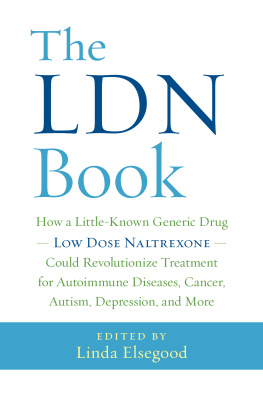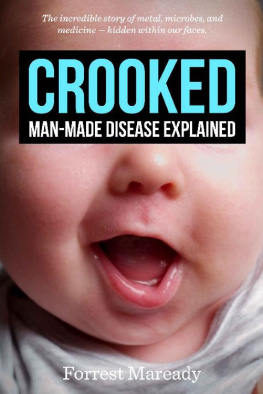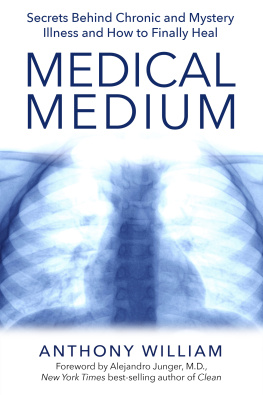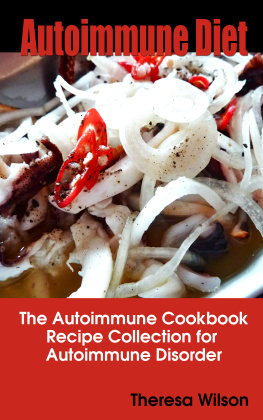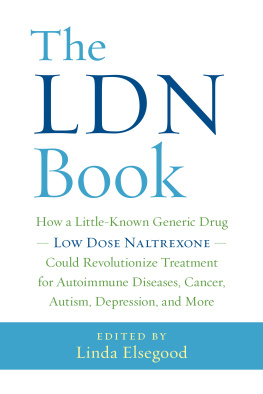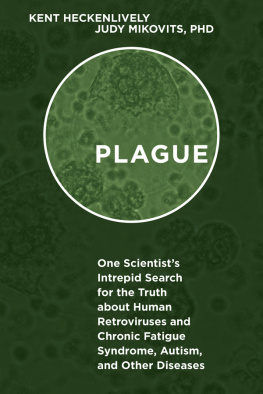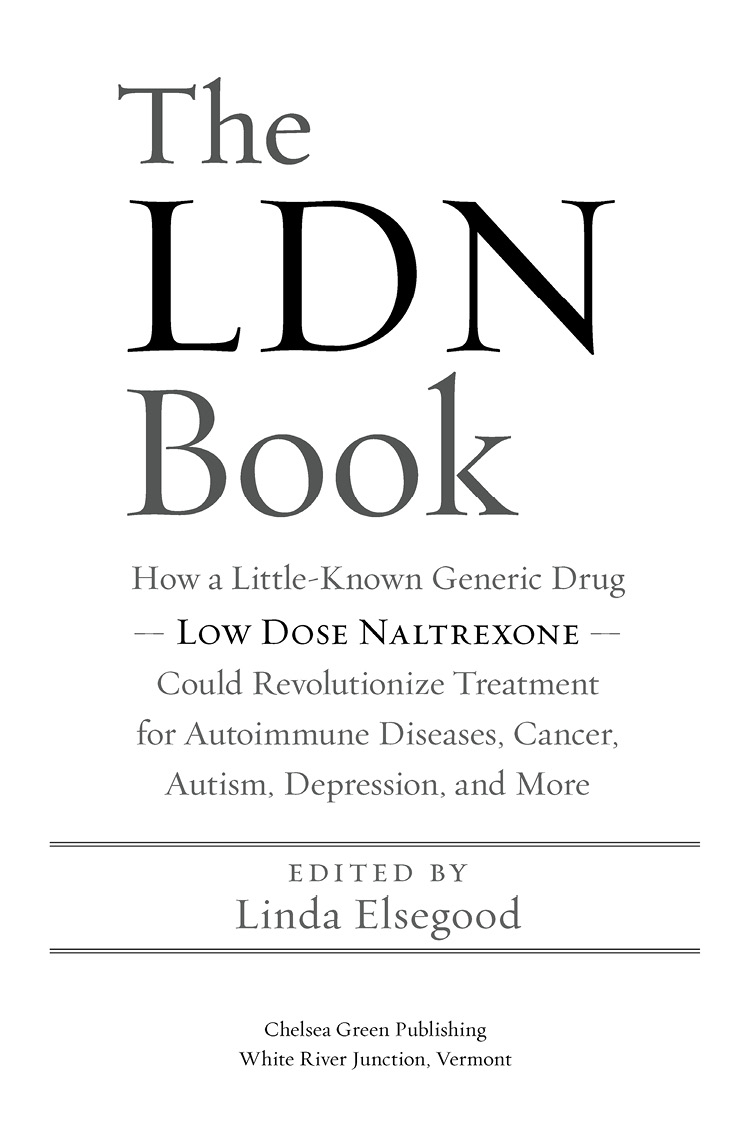Praise for The LDN Book
As a practicing physician who has used LDN as a cornerstone therapy for over fifteen years, I can say without equivocation that LDN is the most important and successful medicine I have ever used. I often joke that if not for LDN I couldnt pay my mortgage; Ive had so many new patients referred to me by someone whose life has improved dramatically through the use of LDN. And despite my knowledge and experience with LDN, Ive learned a great deal from The LDN Book aspects of its basic science I hadnt known, new uses, and how its uses can inform us about the causes of various diseases. This is a wonderful book for any patient with an autoimmune disease, cancer, depression, or a host of other conditions and is a must -read for any physician whose goal is to help their patients.
Dr. Thomas Cowan , author of The Fourfold Path to Healing ; coauthor of The Nourishing Traditions Book of Baby & Child Care
I first came across LDN several years ago when a medical colleague said I should look into its positive effects in patients with MS, Crohns disease, and other autoimmune disorders. I was so impressed with what I read that I helped submit a petition to the UK government to ask for funding for further research into this inexpensive drug. But, as with so many petitions, no progress was made. I hope The LDN Book which presents up-to-date findings that again confirm the efficacy of this safe, cheap, generic drug in helping to control many chronic, disabling conditionsis read by those in the Department of Health and by all doctors caring for patients with autoimmune disease. In the UK, LDN has been stranded in limbo; maybe now the time has come for it to be accepted as a recognized therapy that could, at least, be tried on those suffering such long-term diseases of the immune system.
Dr. Chris Steele , MBE, general practitioner; medical presenter on ITVs This Morning
Low Dose Naltrexone (LDN) was discovered by my husband and partner, Dr. Bernard Bihari. Incredibly informative and superbly written by various members of the medical profession sharing their experiences using this extraordinary drug, The LDN Book honors his legacy in helping patients suffering from autoimmune and other diseases to regain their health and their lives.
Jacqueline Young
Copyright 2016 by The LDN Research Trust.
All rights reserved.
All royalties from this book will go to support The LDN Research Trust.
No part of this book may be transmitted or reproduced in any form by any means without permission in writing from the publisher.
Project Manager: Alexander Bullett
Developmental Editor: Michael Metivier
Copy Editor: Deborah Heimann
Proofreader: Helen Walden
Indexer: Lee Lawton
Designer: Melissa Jacobson
Printed in the United States of America.
First printing February, 2016.
10 9 8 7 6 5 4 3 2 1 16 17 18 19 20
Our Commitment to Green Publishing
Chelsea Green sees publishing as a tool for cultural change and ecological stewardship. We strive to align our book manufacturing practices with our editorial mission and to reduce the impact of our business enterprise in the environment. We print our books and catalogs on chlorine-free recycled paper, using vegetable-based inks whenever possible. This book may cost slightly more because it was printed on paper that contains recycled fiber, and we hope youll agree that its worth it. Chelsea Green is a member of the Green Press Initiative ( www.greenpressinitiative.org ), a nonprofit coalition of publishers, manufacturers, and authors working to protect the worlds endangered forests and conserve natural resources. The LDN Book was printed on paper supplied by Thomson-Shore that contains 100% postconsumer recycled fiber.
Library of Congress Cataloging-in-Publication Data
Names: Elsegood, Linda, 1956- , editor.
Title: The LDN book : how a little-known generic drug, low dose naltrexone, could revolutionize treatment for autoimmune diseases, cancer, autism, depression, and more / edited by Linda Elsegood.
Other titles: Low dose naltrexone book
Description: White River Junction, Vermont : Chelsea Green Publishing, [2016]
| Includes bibliographical references and index.
Identifiers: LCCN 2015041133| ISBN 9781603586641 (pbk.) | ISBN 9781603586658 (ebook)
Subjects: | MESH: Naltrexonetherapeutic use. | Dose-Response Relationship, Drug. | Naltrexonepharmacology. | Narcotic Antagoniststherapeutic use. | Opioid Peptidesmetabolism.
Classification: LCC RM328 | NLM QV 89 | DDC 615.1/9dc23
LC record available at http://lccn.loc.gov/2015041133
Chelsea Green Publishing
85 North Main Street, Suite 120
White River Junction, VT 05001
(802) 295-6300
www.chelseagreen.com
To my late father,
who believed I could achieve anything if I tried hard enough. Dad, thank you for always supporting me, and for making me the person I am today!
Contents
by J. Stephen Dickson
by Deanna Windham
by Jill P. Smith and Leonard B. Weinstock
by Kent Holtorf
by Kent Holtorf
by Leonard B. Weinstock and Trisha L. Myers
by Mark Shukhman and Rebecca Shukhman
by Brian D. Udell
by Angus G. Dalgleish with Wai M. Liu
by Mark H. Mandel
by Skip Lenz with Julia Schopick
Preface
As the founder of the LDN Research Trust, I have been in contact with thousands of people from around the world suffering from a multitude of diseases and afflictions. Ive also witnessed, through their testimonies, how low dose naltrexone (LDN) has helped ease their symptoms and enabled them to live more enjoyable lives.
My own LDN story began in 1969, when at the age of thirteen I contracted glandular fever, also known as mono. I was seriously ill and away from school for six months. After that, strange things started to happen: trapped nerves here and there, slipped discs; my life seemed to become a never-ending series of health travails.
But things really took a turn for the worse when, in December of 1999, my mother suffered a serious heart attack, the trauma of which affected me badly. I was working full time, commuting two and a half hours to work every day, visiting and caring for my mother and father and, on top of it all, running the family home. I was constantly fatigued.
The following January I came down with a bad flu that kept me home from work for two weeks, and it was followed by a case of gastroenteritis. My immune system was compromised, so it took me at least three additional weeks to recover. This bout of ill health continued when I apparently slipped a disc, causing pins and needles sensations in my right leg. My energy levels were continuing to fall rapidly, I was finding it difficult to cope, and I had to sleep constantly.
At around Easter of that year I decided I had to break this cycle. I took a week off from work and, with my younger daughter, Laura, went to Portugal with the hope that I would start feeling better. Ominously, the day before we left, the left side of my tongue felt burned, as if Id eaten hot melted cheese, even though I could not remember eating anything like that. Sadly, our vacation sun was nowhere to be seen. Portugal was unbelievably wet, cold, and windy, wind that made the left side of my face numb and tingly.
Back home, I went to see my general practitioner, who thought I had a trapped nerve in my neck. He said I should see a neurologist. However, the earliest available appointment was not for another four months. When the appointment came, my neurologist debated whether I had either had a mild stroke, contracted a foreign disease, developed a brain tumor, or developed multiple sclerosis. Which diagnosis was I meant to hope for? I just wanted him to give me a pill and send me on my way.

